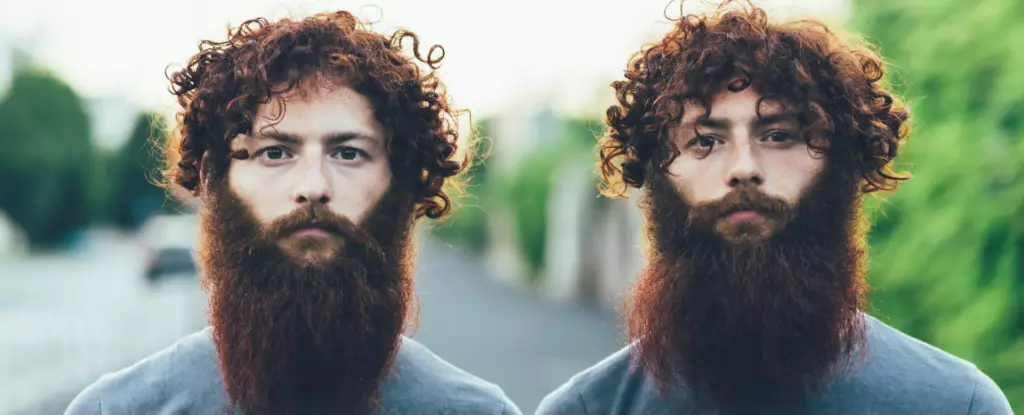In human history, hair and nails have served as outward expressions of identity, culture, and social standing. From ancient civilizations to modern society, these features have been more than mere biological traits; they reflect personal and societal values. Particularly during the COVID-19 pandemic, many individuals found newfound respect for hairdressers and nail artists as routine grooming became a luxury denied to them during lockdowns. The observation that even celebrities like Taylor Swift turned to self-grooming underscores the pervasive connection between our hair and nails and our self-image.
While some might scoff at the significance of hair and nails, their role becomes evident when considering their implications in various contexts—architecture of style, fashion mobility, or even in default social stratification. The visual signal that one’s appearance delivers carries weight, influencing perceptions of professionalism and desirability. Imagine a business meeting where a polished appearance contrasts sharply with unkempt hair and ragged nails; the social dynamics at play could very well dictate outcomes in terms of opportunities and expressions of respect.
The biological processes governing the growth of hair and nails are fascinating. On average, hair grows at a rate of approximately one centimeter per month, while fingernails expand by over three millimeters. In contrast to ordinary growth patterns, individuals like Aliia Nasyrova—known as Ukraine’s Rapunzel for her extraordinary locks—and Diana Armstrong, who holds the record for the world’s longest fingernails, illustrate how unchecked growth can lead to extremes.
The growth of hair and nails originates from specialized cells known as matrix cells, situated beneath the skin. The process of cell division and maturation inside the follicles is intricate. Hair development initiates from the root within a protective sac called the hair follicle, programmed to respond to various biological signals. This responsiveness forms the backbone of the hair growth cycle, which comprises crucial phases: the anagen (growth), catagen (transition), telogen (rest), and exogen (shedding). Each follicle’s performance during these phases contributes to the overall health and appearance of one’s hair.
Interestingly, while we lose between 100 and 150 hairs daily, the average human head boasts around 100,000 hair follicles, making this natural shedding a subtle aspect of life that often goes unnoticed. The underlying dominance of genetics cannot be understated; family traits often define growth rates and characteristics in both hair and nails, highlighting that we inherit not just physical attributes but also biological tendencies.
Factors Influencing Growth Patterns
Different influences—genetic, environmental, hormonal, and nutritional—interact and shape an individual’s hair and nail growth. Age plays a critical role. Youth is often characterized by a vigorous metabolic and cellular function, resulting in rapid growth, while aging introduces slower metabolism and diminished regenerative capabilities.
Hormonal fluctuations, particularly during pregnancy or menopause, can also seriously influence the rate of growth. For instance, many expectant mothers notice an increase in hair and nail vitality during pregnancy due to elevated hormones, while circumstances like stress can precipitate hair loss or impaired nail growth. This interplay between biology and environment encapsulates the complexity of our bodies, suggesting a sophisticated dialogue rooted in evolutionary design.
Nutritional factors, too, cannot be overlooked. Hair and nails are largely comprised of keratin, along with essential nutrients like water, fats, and minerals. A balanced diet rich in iron and zinc, for instance, is paramount for maintaining hair and nail strength. Inadequate intake often leads to brittle nails and hair loss, reinforcing the association between physical appearances and health status in societal perceptions.
One prevalent myth surrounding hair and nails is the belief that they continue to grow post-mortem. In truth, this is merely an illusion created by the body’s dehydration process that leads to skin shrinkage, giving the appearance of longer strands. Mortuary professionals are acquainted with this biological quirk and often utilize techniques to counteract its effects during preparation.
Ultimately, the fascination with our hair and nails transcends mere grooming; it touches on primal aspects of identity and societal connection. In living and beyond, the oversight of these characteristics shapes how we view ourselves and how we are viewed by others. The care of hair and nails is, thus, not simply a chore; it’s an integral part of our social narrative, a bridge between biology and identity. Whether polished in the boardroom or untamed in the wilds of life, the ongoing quest to care for our hair and nails reveals much about our humanity.


Leave a Reply